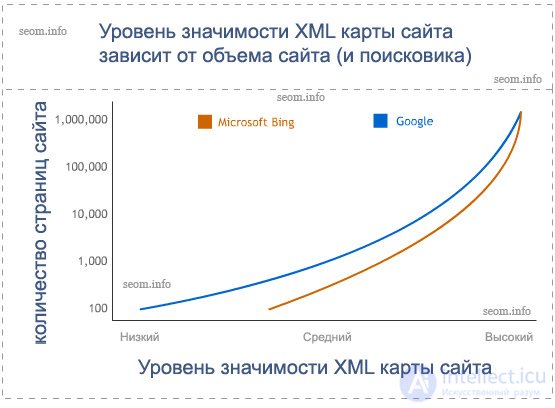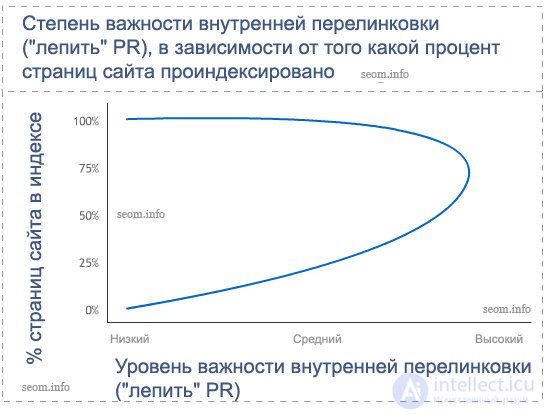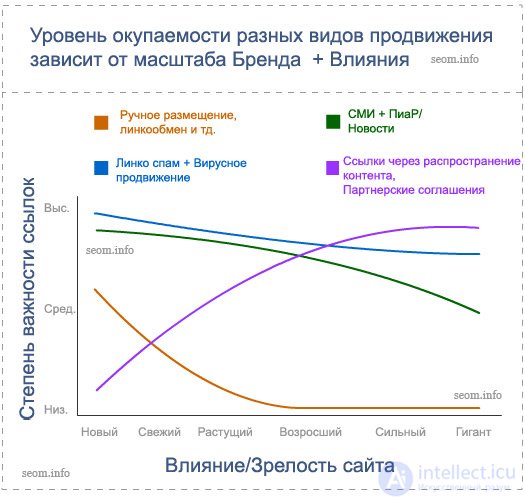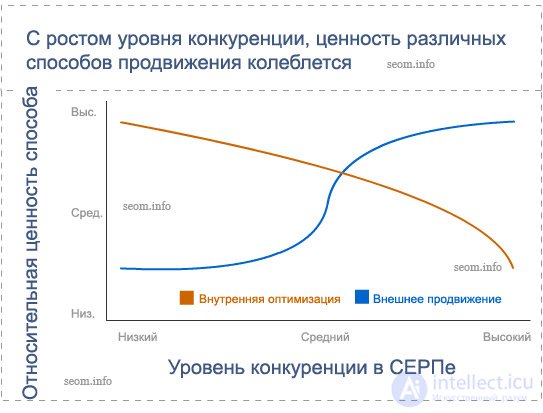Lecture
Interesting material from caught in our networks, it may seem controversial, but we had to provide it for you for review. Writes Rand Fishkin.
Although this information may seem very relative, I believe that this is of great interest.
Under each chart, I write explanations to him.

The first chart is nothing complicated. As we can see, in SERP with a low level of competition (long and unpopular requests, non-competitive segment, etc.) internal optimization is of great importance .
But with the increasing level of competition, internal factors fade into the background, as other well-optimized sites appear.
In such a situation, when ranking, search engines begin to increasingly focus on various indicators of the site (popularity, credibility, importance, etc.) where links play a major role, in other words, the importance of promotion due to external factors increases.
This does not mean at all that with high competition there is no need to pay attention to internal optimization, it’s just that the importance of external factors grows with increasing competition.

For the analysis, I chose only a few of the most popular ways to build up a reference mass ( external promotion tactics ), while drawing up the schedule I surprisingly discovered some interesting things for myself:

The topic that caused a lively discussion at the SMX East conference , whether it is necessary to “sculpt” the PR of your site (a new concept meaning accumulation of page on the more important pages of the site, and close it to less important with the tag rel = "nofollow "or other means) were six speakers and each of them had their own opinion on this issue.
Although it was very difficult to come to some kind of unanimous opinion, the majority of the conference participants agreed that this practice has a positive effect if there are new pages on the site that cannot be included in the index for some reason.
On the graph, I showed this principle, where you can see that the real benefits of PR modeling are (no matter what method you do: using the nofollow tag, carefully selecting internal links, grouping links, strengthening links, etc.) only if not all of your pages in the index of search engines .
You probably noticed that I showed the low importance of PR modeling if 0-20% of the site pages are in the index, because in this case the site does not have enough weight to distribute it through links.
You first need to collect enough weight, and only then send it to the pages you want to get into the index.

The same situation with XML site maps, they play an important role only in certain cases (and, interestingly, with certain search engines).
From personal experience I can say that the search engine Microsoft Bing pays more attention to XML maps compared to Google , but as the number of pages on the site grows, both of these search engines give equal attention to them (I don’t take Yahoo! into account because I still haven’t seen any interest to the site maps - and I have been waiting for this from them for the past 8-10 months, so we will explore only two search engines: Google and Bing ).
Comments
To leave a comment
seo, smo, monetization, basics of internet marketing
Terms: seo, smo, monetization, basics of internet marketing